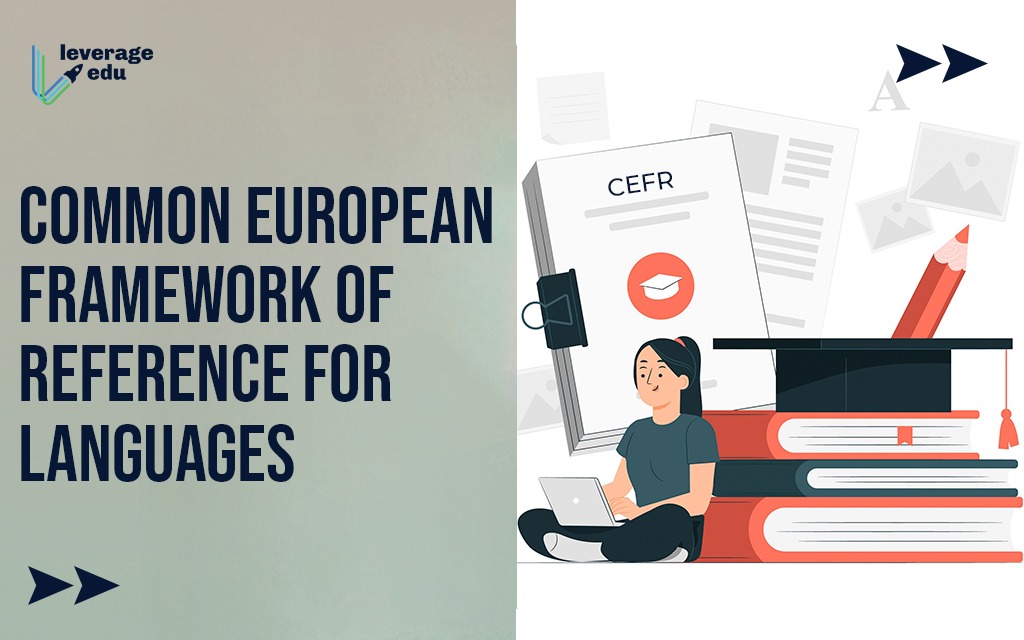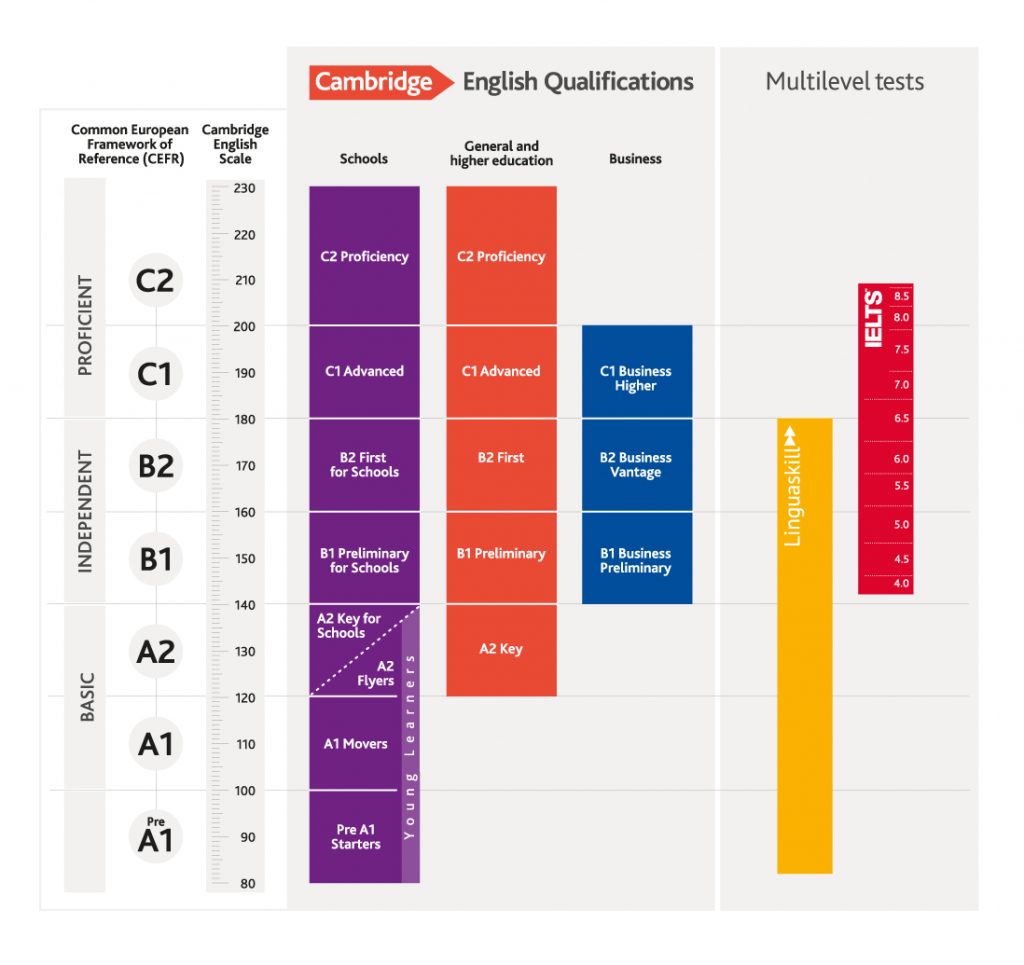Common European Framework of Reference for Languages
Studying abroad frequently necessitates a series of exams, which are sometimes categorised as language proficiency tests (like IELTS,… The post Common European Framework of Reference for Languages appeared first on Leverage Edu.


Studying abroad frequently necessitates a series of exams, which are sometimes categorised as language proficiency tests (like IELTS, TOEFL, PTE, DSH, etc.) Having said that, when aspirants apply to European countries, language proficiency is more or less a prerequisite requirement. However, the level of competency required for various courses varies, which is where the Common European Framework of Reference or the CEFR comes into play. We shall learn everything there is to know about CEFR and much more in this blog.
Know about the Best Foreign Language to Learn in 2021
What is CEFR?
The Council of Europe developed the Common European Framework of Reference for Languages (CEFR) in 2001 as a reference document detailing the information and abilities that language learners must acquire to can communicate successfully in a foreign language. It establishes a common ground for the construction of language curriculum and textbooks, as well as the interpretation of language test results.
It uses a six-point scale to describe language proficiency, ranging from A1 for beginners to C2 for those who have mastered a language. This allows anyone involved in language education and testing, such as teachers and students, to quickly assess the level of various certifications. Employers and educational institutions would be able to readily compare our credentials to those obtained through other tests in their country.
Learn about the Duolingo English Test: Benefits, Accepting Colleges
Features & Objectives of the CEFR Scale
The CEFR scale is a generally accepted linguistic framework that serves as a common ground for second language education in Europe and beyond. The CEFR scale has the following features and objectives:
- It takes an action-oriented approach to describe language acquisition outcomes.
- It focuses on three main aspects of language learning: communication, circumstances in which a language is used, and the skills speakers use to engage with the language.
- It includes reading, listening, writing, speaking, and interpreting as well as four types of language activities: reception, production, interaction, and mediation.
- It helps curriculum authors and reviewers produce testing and learning materials with positive “can do” adjectives that meet the needs, ages, and interests of all learners.
- It specifies texts, locations, operations, institutions, events, people, and things using a categorical approach to four language use domains — professional, public, personal, and educational.
- It aids educators in the creation and revision of educational materials and textbooks.
- It encourages teacher development and collaboration among educators of various languages.
- It increases language competence teaching, learning, and assessment success and quality.
- Above all, it promotes transparency in testing and comparison of language proficiency certifications.
Why is it Important?
The Common European Framework defines how language learners communicate in a certain language and what abilities they need to speak effectively. It also takes into account the cultural environment of the language. The CEFR provides a common platform for educators and curriculum makers to communicate and reflect across the Council of Europe’s member nations. Their purpose is to create an atmosphere that allows language learners to study more effectively in their respective situations.
CEFR Language Proficiency Levels
Six standard reference levels are included in the CEFR: A1, A2, B1, B2, C1, and C2. The language user’s proficiency is described by “can-do” adjectives at each level. In general, an A level user is a beginner, a B level user is an independent user, and a C level user is a skilled user. The CEFR language levels are listed here, from A1 to C2.
| Level | Description |
| A1 (Beginner) | The ability to communicate and exchange simple information is demonstrated at the most basic level. To meet their needs, the language learner can use and understand common terms and simple phrases. They can, for example, present themselves and others and engage in talks about personal matters such as belongings, acquaintances, and where they live. When the other person speaks slowly and tries to help, the language learner can understand the dialogue at this level. |
| A2 (Elementary) | The A2 level refers to the ability to speak about everyday needs in the language, which is a slight improvement above A1. The person can grasp the everyday language, describe their immediate surroundings, and respond to regular and direct questions. |
| B1 (Intermediate) | This level shows a limited ability to express oneself in known situations and to deal with unfamiliar situations in general. The language learner can comprehend the most important details about leisure, employment, and school. They can also convey their objectives, future events, desires, and dreams, as well as provide concise explanations for their plans and ideas. In a region where the target language is widely spoken, they will most likely feel at ease talking. |
| B2 (Upper Intermediate) | This level exhibits the ability to achieve most objectives and communicate oneself on a variety of themes. The language learner can understand the main ideas in a complicated text on both abstract and concrete topics, such as technical conversations in their field of work. They can converse with native speakers with ease and spontaneity, reducing strain on both parties. |
| C1 (Advanced) | The C Level refers to advanced degrees of language competency and is defined as a level at which a person can easily speak, write, and talk in a foreign language. The fluency has also increased significantly, and the vocabulary has grown significantly. This level denotes a person’s ability to utilise the language effectively and efficiently in academic or professional situations. |
| C2 (Proficient) | This is the highest degree of proficiency, indicating the candidates’ ability to communicate freely in a foreign language. The ability to argue and explain one’s point of view, as well as perceive the finer nuances of the language, adds to a person’s fluency and vocabulary. To put it another way, this is the closest a person can go to speaking the language fluently. |

Note: The common reference levels serve as a benchmark for comparing and contrasting second/foreign language curricula, textbooks, courses, and tests. They can also be used to support the construction of curricula, teaching programmes, learning resources, and assessment instruments when combined with the rest of the CEFR’s descriptive apparatus.
Let’s Test Your Language Proficiency With this English Quiz!
Corresponding Scores for Other Language Exams
As previously stated, language requirements may differ from university to university and country to country. Different universities within the same country may require a different level of proficiency. Furthermore, the level of proficiency required varies from course to course. For example, a university in Germany may require you to have a B2 level, whereas another university may require a C1. Also, sometimes the same university may require a B2 level for undergraduate courses but only a C1 level for a master’s programme. Here is a list of the many levels to which the various language proficiency examinations correspond:
| Proficiency Exam | A1 | A2 | B1 | B2 | C1 | C2 |
| IELTS | 2.0 | 3.0 | 3.5 – 4.5 | 5.0 – 6.0 | 6.5 – 7.5 | 8.0 – 9.0 |
| TOEFL (iBT) | – | 10 – 15 (speaking) 7 – 12 (writing) |
42 – 71 (total) | 72 – 94 (total) | 95 – 120 (total) | – |
| PTE Academic | – | 30 | 43 | 59 | 76 | 85 |
Make your test scores skyrocket with Leverage Live. Book your FREE demo class here!
FAQs
The CEFR was created in the 1990s by the Council of Europe as part of a larger initiative to increase collaboration among language instructors across Europe. In addition, the Council of Europe aimed to make it easier for businesses and educational institutions to assess candidates’ language skills. The framework is meant to be used for both teaching and assessment purposes. The CEFR is a collection of can-do assertions that identify the functions you will be able to do using a foreign language at any given level of skill, rather than being connected to a specific exam.
The CEFR is becoming the usual approach to describe your competency level in a foreign language in Europe, especially in academic settings. The CEFR is a straightforward standardised approach to show two or more languages on your CV if you have studied more than one language, as most Europeans have. The CEFR is the European standard framework for education and may be used without reservation in schools and universities throughout Europe.
The CEFR is widely utilised in language instruction, both in public schools and in private language schools. It has supplanted prior levelling schemes in foreign language training in several nations. Most European education ministries have a clear CEFR-based aim for all students graduating from high schools, such as B2 in their first foreign language and B1 in their second. Many European individuals utilise a standardised exam score, such as the TOEIC, to define their English ability when looking for work.
Taking a well-designed standardised test is the best approach to determine your CEFR level. Because it is free and the first standardised test to be fully matched to the CEFR, the EF SET is the best choice in English. To finish the exam and determine your CEFR level, you will need to set aside 50 minutes.
Thus, mapping language test scores onto CEFR levels is a valuable approach to give those scores practical significance. This is all you need to know about the CEFR before embarking on your study abroad adventure. We understand that deciding to study abroad and carrying out that plan can be a time-consuming process. Here’s where you will be needing the right mentorship and guidance from our experts at Leverage Edu. Call us at 1800572000 and kickstart your study abroad journey with us.
The post Common European Framework of Reference for Languages appeared first on Leverage Edu.




![National Examinations Council (NECO) Nov/Dec [SSCE] External Timetable For 2022/2023 Examination Exercise | Download NECO Timetable PDF File For Free Here](https://micplustech.com/wp-content/uploads/2020/02/images-33.jpeg)

